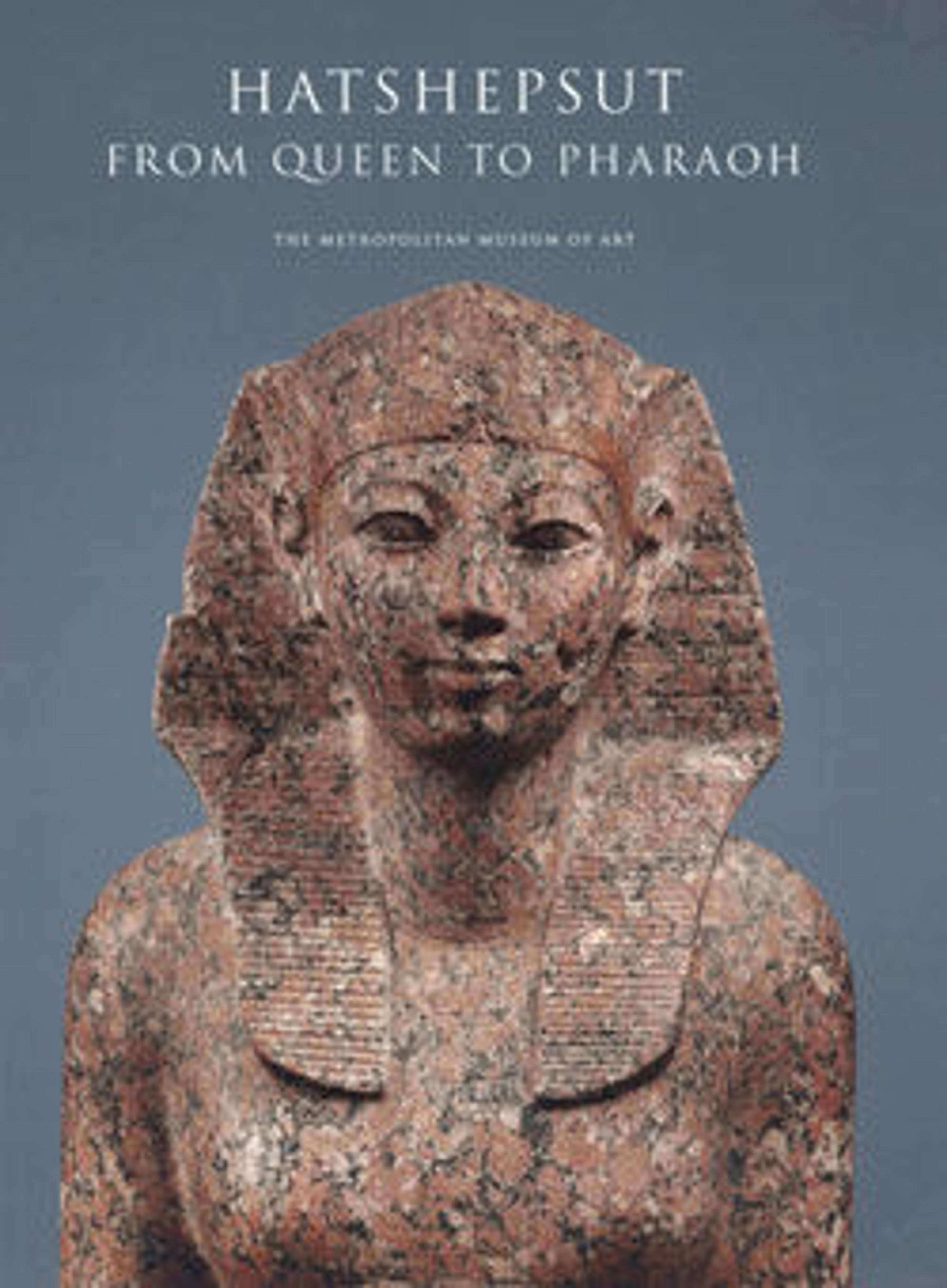Kneeling statue of Hatshepsut
At least eight, and perhaps as many as twelve small kneeling statues of Hatshepsut are thought to have been placed somewhere in the uppermost court of her temple at Deir el-Bahri. In these statues Hatshepsut is represented wearing the khat headcloth, and she offers a nemset vessel with a djed pillar superimposed on the front. It has been suggested that the combined use of the headdress, the vessel, and the djed pillar, which symbolizes endurance, is intended to evoke the setting up of a djed pillar at a king’s rejuvenation festival, or Heb Sed. It has also been suggested that Hatshepsut intended to celebrate a Heb Sed toward the end of her reign.
Artwork Details
- Title:Kneeling statue of Hatshepsut
- Period:New Kingdom
- Dynasty:Dynasty 18
- Reign:Joint reign of Hatshepsut and Thutmose III
- Date:ca. 1479–1458 B.C.
- Geography:From Egypt, Upper Egypt, Thebes, Deir el-Bahri, "Hatshepsut Hole" (depression east of temple of Thutmose III), MMA excavations, 1922–23
- Medium:Granite, paint
- Dimensions:H. 61.6 cm (24 1/4 in.); W. 32.5 cm (12 13/16 in.); D. 51.5 cm (20 1/4 in.)
- Credit Line:Rogers Fund, 1923
- Object Number:23.3.1
- Curatorial Department: Egyptian Art
More Artwork
Research Resources
The Met provides unparalleled resources for research and welcomes an international community of students and scholars. The Met's Open Access API is where creators and researchers can connect to the The Met collection. Open Access data and public domain images are available for unrestricted commercial and noncommercial use without permission or fee.
To request images under copyright and other restrictions, please use this Image Request form.
Feedback
We continue to research and examine historical and cultural context for objects in The Met collection. If you have comments or questions about this object record, please contact us using the form below. The Museum looks forward to receiving your comments.
